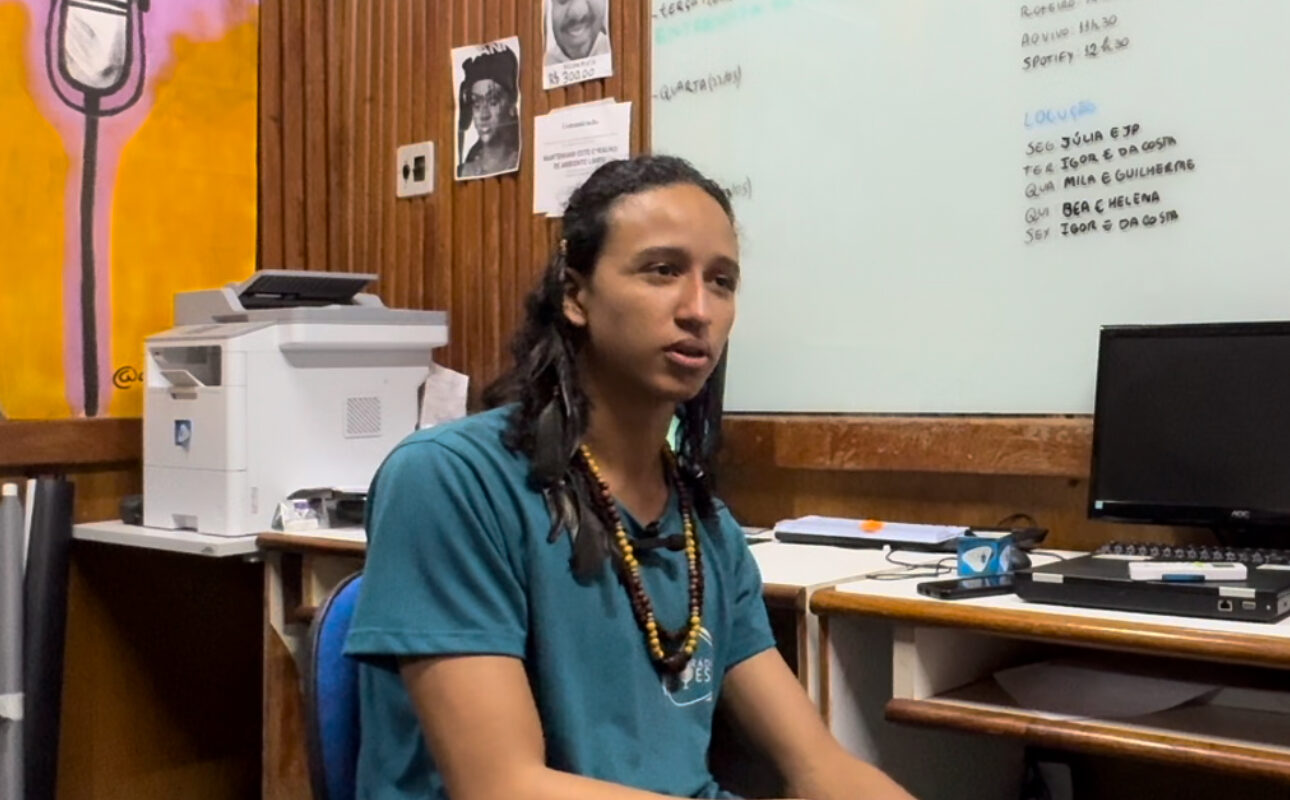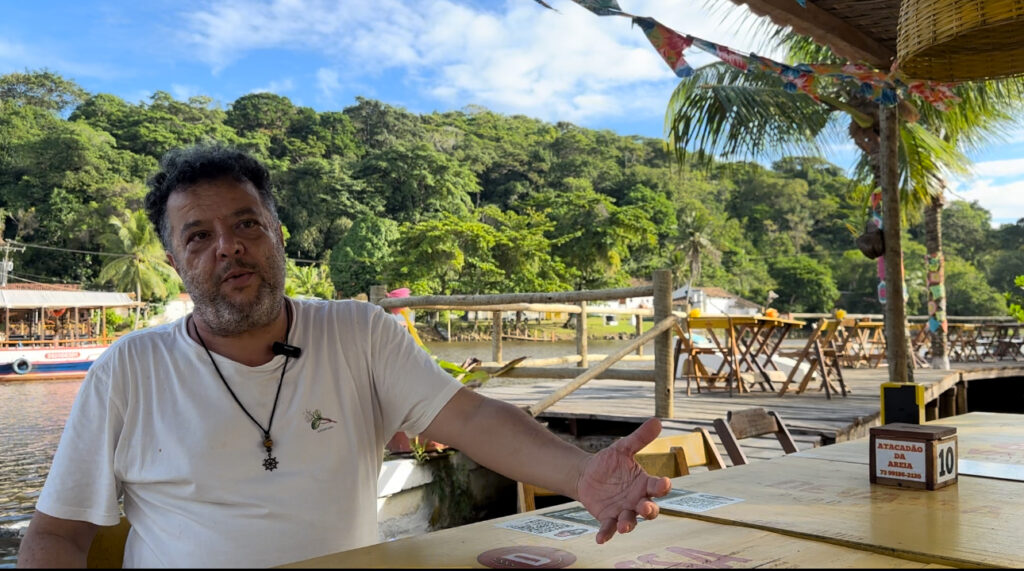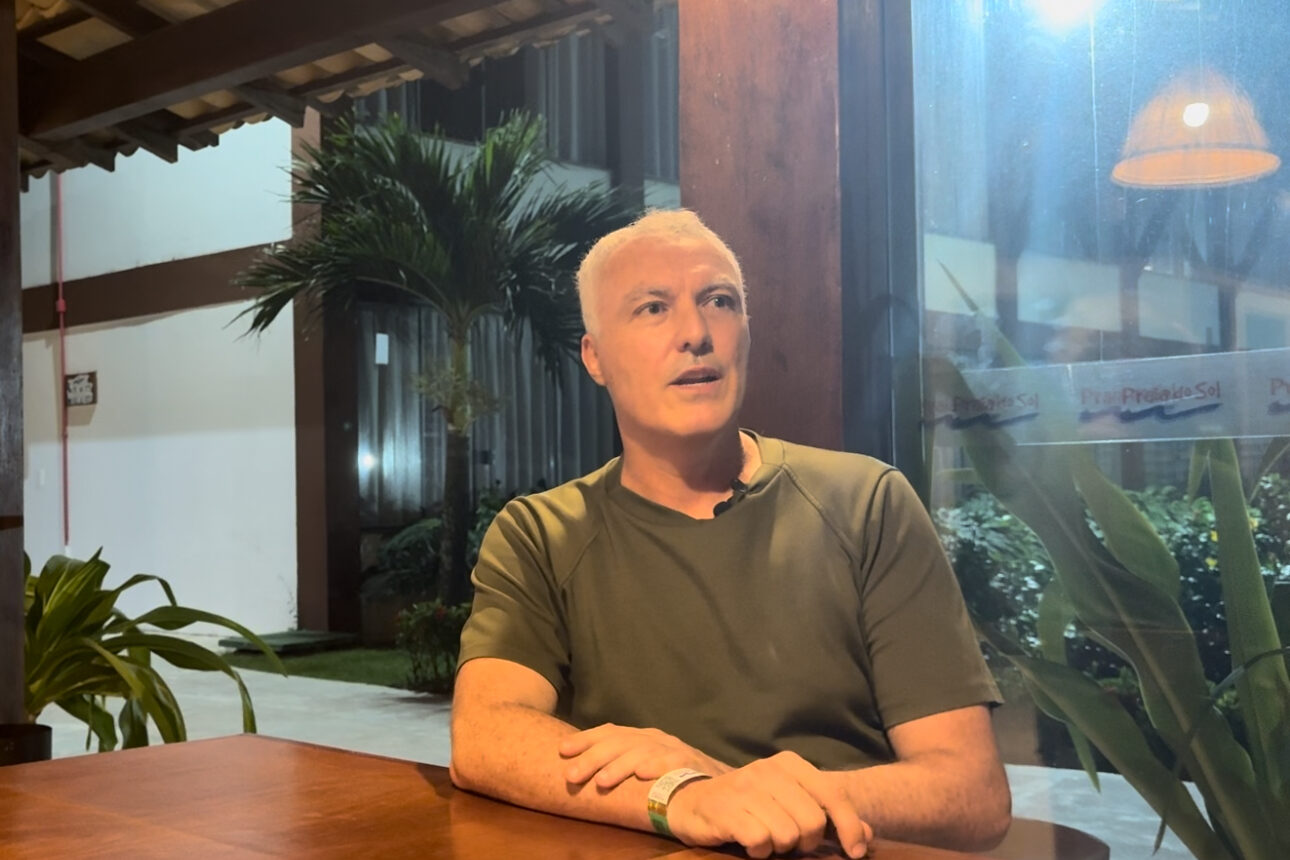CCSU in Brazil
The 1988 Brazilian Constitution recognizes indigenous people as the first and natural owners of the land, and guarantees their right to it, but residents of Brazil and experts say the policy has created political confusion and practical issues, which have led to violent clashes in Bahia, Brazil.
JP Carqueija is a student at the State University of Santa Cruz in Bahia, Brazil and a member of the Tupinambá indigenous group. Carqueija was in Itapetinga on Jan 21, 2024, when Invasão Zero, a group of mostly rural farmers, coordinated an attempt to annex part of the Caramuru Catarina-Paraguaçu territory back from indigenous people.
The group coordinated on a texting app called WhatsApp, sending each other flyers like this one:
Two indigenous people were killed that day, including a spiritual leader that Carqueija knew, Dona Nega Pataxo, who was shot during the struggle.
“She was an awesome person and she was killed by one of these farmers and I was there,” he said. “I was in Itapetinga.”
Carqueija said violent clashes between indigenous people and conservative groups like Invasão Zero are common in this part of Bahia. He said that the battle for this land is one his ancestors have been fighting for generations. He said he prefers a diplomatic approach over bloodshed.
“Today our ways to fight [are] going to the front of the capitol with the president and talking,” Carqueija. said.
Other groups in Brazil have also taken a diplomatic approach. Archaeological historian Marcelo Dias of the State University of Santa Cruz characterized ‘Marco Temporal’ as a semantic issue that has caused a setback in ensuring rights that were to be guaranteed by the 1988 Constitution.
Marco Temporal is based on the milestone thesis, which comes from Brazilian case law. This thesis states that only lands that indigenous people occupied at the time of the ratification of the constitution should be demarcated to indigenous people. Dias said this theory, if followed, would create issues because of the diversity and history of indigenous people.
He brought up the city of Olivença, which had at one point been an indigenous village, and then became a Jesuit village. In the 19th century, there were significant stigmas attached to being considered indigenous. Many who were mixed race would try to differentiate themselves from indigenous culture, Dias said.
He said it wasn’t until 2002 that indigenous people in Olivença started understanding themselves as indigenous.
“They will only seek their self-identification as indigenous people from 2002 onwards, through the actions of The Indigenous Missionary Council, that they will begin to understand themselves as indigenous people and will begin to understand that they need to identify themselves as indigenous people for them to have the right to demarcate their lands,” Dias said.
The indigenous people of Olivença would not be entitled to those lands under the milestone thesis interpretation of the Constitution. Brazil’s supreme court declared Marco Temporal unconstitutional in September of 2023, but many conservatives in Brazil are still pushing for it, and similar policies, Dias said.
Carqueija said he experienced hurtful comments when walking through the streets of Itapetinga the day after the confrontation with Invasão Zero. A person told him that the two people that were killed during the confrontation ‘deserved it.’
“I walk into the streets and I heard the people saying all kinds of terrible comments you can imagine,” Carqueija said. “Oh, he deserved it. Oh, these Indians, no. Awful things.”
Carqueija said he didn’t wear his indigenous accessories at his university at first out of fear, but after becoming closer with his spirituality and talking with other indigenous students at the school, he wears them proudly.
“You can humiliate my people, but I am always higher. I am always better than this,” Carqueija said. “My people mean more than your stupid comments.”
Carqueija said that these racist mentalities toward indigenous people have always existed in Brazil, but some Brazilians were emboldened by the rhetoric and actions of former President Jair Bolsonaro.
“Before Bolsonaro, I’m sure there were a lot of people who were racist, always have been, but didn’t have the bravery to say it louder, to say it in front of a thousand people, and Jair Bolsonaro, he did,” Carqueija said. “They saw in the president someone who thought just like them. They said ‘okay if the president [can], why can I not?’”
Physical clashes and political lobbying are two means of fighting, but archaeologist and professor Walter Morales of the State University of Santa Cruz found a creative way to get indigenous resources to his university.
Every time there is new construction in Brazil, a full archaeological investigation has to take place to ensure what’s being built doesn’t interfere with the environment. A windmill company called GPEXPAN did an incomplete investigation, Morales said.
Morales was tasked by the Brazilian federal government to investigate that area, and he found that archaeological sites had been destroyed by the construction.
The typical punishment in these cases would be a monetary fine, but Morales proposed a different solution.
“I had to attribute monetary value to the impact on archaeology sites, and I said I didn’t want a fine,” Morales said. “The fine would be to build a building at my university to compensate for this impact, the archeology building.”
The building would have state-of-the-art technology and over 900,000 archaeological artifacts for students and professors to study. Morales said that since it was archaeological sites that were destroyed by the company, a new archaeological research center is the only way to provide the appropriate compensation, and the federal government agreed.
Now, the Núcleo de Estudos e Pesquisas Arqueológicas da Bahia, or the Bahia Archaeological Studies and Research Center, is open for research for students and professors at the State University of Santa Cruz.



